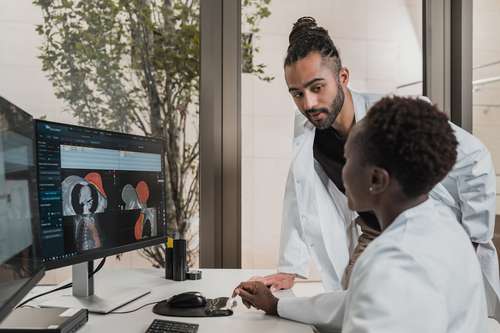A natural response to an unnatural event is post-traumatic stress disorder (PTSD)
Traumatic events include combat, catastrophic accidents, natural disasters, or sexual assault that leave victims with overpowering sensations of dread, helplessness, or horror. The majority of people who experience trauma do not go on to develop post-traumatic stress disorder (PTSD), and those who do may experience symptoms right away, months after the event, or years later. Traumas can be caused by direct or indirect experience with life-threatening situations, serious injuries, or sexual violence (such as rape or combat). We are aware of the damaging effects trauma can have on a person's sense of personal safety and ability to trust others. As a result, individuals may refrain from acting or going in situations where they are unable to manage their environment. They occasionally have a dread of losing control of their body or of being overtaken by unwelcome thoughts and feelings. The four "clusters" of symptoms associated with PTSD include arousal, intrusion, avoidance, and negative thoughts and moods.
Yoga can be a very effective treatment for PTSD since it helps the body and mind in addition to creating a sense of safe community where patients can find comfort and support.
Therapy can be an important component of a person's medical care, alongside medication and psychotherapy, as well as a self-care skill they can use at any time.
Yoga therapists are able to gently and safely help PTSD patients toward recovery by integrating yogic approaches with a thorough understanding of the neurology, psychology, and physiology of trauma. Furthermore, they can assist people in truly committing to counseling or therapy by working within the parameters of a larger treatment plan.
The four "clusters" of symptoms associated with PTSD include arousal, intrusion, avoidance, and negative thoughts and moods.
Yoga can be a very effective treatment for PTSD since it helps the body and mind in addition to creating a sense of safe community where patients can find comfort and support.
Therapy can be an important component of a person's medical care, alongside medication and psychotherapy, as well as a self-care skill they can use at any time.
Yoga therapists are able to gently and safely help PTSD patients toward recovery by integrating yogic approaches with a thorough understanding of the neurology, psychology, and physiology of trauma. Furthermore, they can assist people in truly committing to counseling or therapy by working within the parameters of a larger treatment plan.
PTSD signs and symptoms include:
- Re-experiencing the traumatic event through flashbacks, nightmares and physical sensations.
- Avoidance of anything that reminds the sufferer of the event. They will also push away feelings and memories, and can experience emotional numbness and dissociation.
- Hyperarousal and constantly feeling “on edge”, often associated with hypervigilance, irritability and insomnia.
- Co-occuring issues such as anxiety, depression, alcohol/substance misuse and relationship breakdown.
- A variant form of PTSD can also appear when people have lived through ongoing stress or fear, which is defined as complex post-traumatic stress disorder (or c-PTSD). People are more likely to develop c-PTSD if they endured trauma at an early age, have experienced multiple traumas or if their trauma lasted a long time, such as in cases of childhood abuse.
Why Use Yoga for Trauma as a Complement to PTSD Treatment?
 Trauma impacts people physically, intellectually, and emotionally, with effects felt in the body as well as the mind. In order to heal from their PTSD, people with PTSD are increasingly turning to yoga therapy since it works across all of these domains.
Post-Traumatic Stress Disorder is an illness that often requires an individualized and multifaceted response, and no two people’s experience of trauma will be the same. Yoga therapy is effective tool that addresses PTSD on a variety of levels, allowing people to move forward and find a new life after trauma.
Being unable to control one's physiological survival response is a major problem for someone with post-traumatic stress disorder. A person may instinctively and unconsciously become hypervigilant or even panicky even when they are aware they are not in danger. People who practice yoga and stabilize their autonomic nervous system (ANS) are better able to participate in counseling and psychotherapy and start processing their trauma.
When an unpleasant memory is aroused, yoga therapy may make it easier for a person to swiftly return to their normal physiological condition. Yoga is believed to improve neuronal functioning by teaching the ANS to be more dynamically adaptive. Mindfulness meditation, which is a component of yoga, is also believed to increase hippocampus volume and reduce amygdala size.
Trauma impacts people physically, intellectually, and emotionally, with effects felt in the body as well as the mind. In order to heal from their PTSD, people with PTSD are increasingly turning to yoga therapy since it works across all of these domains.
Post-Traumatic Stress Disorder is an illness that often requires an individualized and multifaceted response, and no two people’s experience of trauma will be the same. Yoga therapy is effective tool that addresses PTSD on a variety of levels, allowing people to move forward and find a new life after trauma.
Being unable to control one's physiological survival response is a major problem for someone with post-traumatic stress disorder. A person may instinctively and unconsciously become hypervigilant or even panicky even when they are aware they are not in danger. People who practice yoga and stabilize their autonomic nervous system (ANS) are better able to participate in counseling and psychotherapy and start processing their trauma.
When an unpleasant memory is aroused, yoga therapy may make it easier for a person to swiftly return to their normal physiological condition. Yoga is believed to improve neuronal functioning by teaching the ANS to be more dynamically adaptive. Mindfulness meditation, which is a component of yoga, is also believed to increase hippocampus volume and reduce amygdala size.
 Trauma survivors may lack body awareness and sense a separation of mind and body. This is due to the hyperarousal that makes physical reactions unpredictable and unrelated to conscious cognition, as well as a type of avoidance on their part as they try to avoid any feelings or sensations that trigger memories of their trauma.
Yoga is fundamentally about developing body awareness, which is linked to less severe symptoms through teaching people how to "learn abilities in tolerating and modifying physiologic and affective states that have become dysregulated by trauma exposure".
People can improve their ability to handle defensive reactions that follow reliving traumatic experiences (or other triggers) in a yoga class by developing nonreactive mindful awareness of both their internal and external environment.
People with PTSD may have a very difficult time interacting with others and coping when they are with them because they are biologically ready for threat. Even their closest relationships may suffer as a result.
A yoga class gives them the opportunity to socialize in a self-directed and natural way, finding support among peers without the expectation to engage beyond their current comfort zone.
Trauma survivors may lack body awareness and sense a separation of mind and body. This is due to the hyperarousal that makes physical reactions unpredictable and unrelated to conscious cognition, as well as a type of avoidance on their part as they try to avoid any feelings or sensations that trigger memories of their trauma.
Yoga is fundamentally about developing body awareness, which is linked to less severe symptoms through teaching people how to "learn abilities in tolerating and modifying physiologic and affective states that have become dysregulated by trauma exposure".
People can improve their ability to handle defensive reactions that follow reliving traumatic experiences (or other triggers) in a yoga class by developing nonreactive mindful awareness of both their internal and external environment.
People with PTSD may have a very difficult time interacting with others and coping when they are with them because they are biologically ready for threat. Even their closest relationships may suffer as a result.
A yoga class gives them the opportunity to socialize in a self-directed and natural way, finding support among peers without the expectation to engage beyond their current comfort zone.




